When you begin choosing your plants for your house plant collection you have unique and beautiful in mind. Geogenanthus ciliatus, although not the easiest to say and probably as difficult to find, has both unique and beautiful qualities and more. A relative newcomer to North America, the Geo is making itself known and has become a sought-after plant by enthusiasts.
This rare beauty comes from the tropical forest floors of South America adding depth and character to your collection. The color of the foliage may be one characteristic of this plant that makes it desirable and one of the reasons it’s gaining a spot on many plant enthusiasts “be on the lookout for” list.

What Is Geogenanthus Ciliatus?
Geogenanthus ciliatus is a ground cover species of flowering plant in the family Commelinaceae, also known as the Dayflower and Spiderwort family. It originates from the rainforests of South America and is primarily found in Brazil and Peru. This rare plant is a purple-black lacquered stunner with amazing leaves, featuring dark, almost black, foliage.
Geogenanthus ciliatus requires a slightly acidic to neutral soil mix that is kept consistently moist but not oversaturated with water. It prefers low to medium light conditions and will do well in dappled or partial sunlight. The plant got its name from the Greek words that mean earth (“geos”), borne (“genus”) and flower (“anthus”), referring to its underground tuberous rhizomes that produce its flowers.
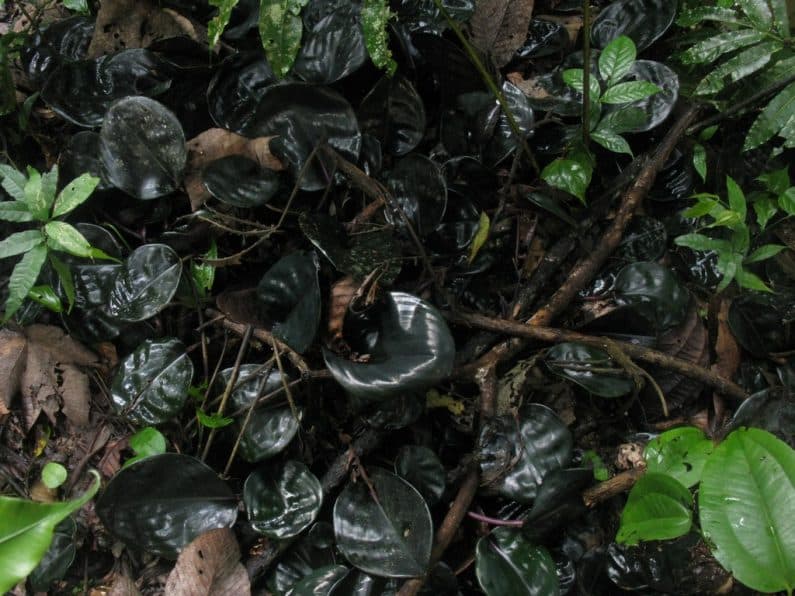
Geogenanthus ciliatus is a gorgeous addition to any plant collection but may require some extra care and attention due to its specific requirements for soil, lighting, and watering. But don't let that scare you off, it really is straightforward and easy to care for.
Geogenanthus Ciliatus Plant Basics:
| Common Name: | Geo, Ciliatus plant |
| Botanical Name: | Geogenanthus Ciliatus |
| Plant Type: | Rhizomatous |
| Size: | The leaves can grow up to 6-8 inches and the plant up to 24 inches wide |
| Light: | Medium – bright indirect light, but can tolerate lower light levels |
| Soil: | Airy, well draining soil |
| Water: | This plant loves water but not soaking in it |
| Vulnerabilities: | Root rot from overwatering, aphids, mealybugs and spider mites |
| USDA Growing Zones: | Zone 10a – 12 |
Plant Care for Geogenanthus Ciliatus
Hard to find but easy to care for, the “Geo” does have specific care guides that should be followed. Soil, water, and light, along with fertilization and maintenance are all part of keeping this dark beauty looking its best.
Geogenanthus Ciliatus Soil
Geogenanthus Ciliatus requires and loves a well-draining soil that is rich in organic matter. The soil pH should be slightly acidic to neutral, with a range of 6.1 to 7.3. The soil should have good water retention properties, but also allows for quick and easy draining to avoid root damage issues.
A suitable soil mix for Geogenanthus Ciliatus is a combination of peat moss, vermiculite, and perlite. Another option is to use African Violet potting mix, which is well-draining and contains the necessary organic matter. A loam-based potting mix with sand and peat moss can also work well for this plant.

Geogenanthus Ciliatus Water Needs
Geogenanthus Ciliatus prefers to be consistently moist but not waterlogged. Water your plant thoroughly when the top 1-2 inches of soil has dried out. It is important to use a flower pot with drainage holes in the bottom to ensure proper drainage. When watering, ensure that excess water drains out of the pot and is not left sitting in the saucer.
Misting the leaves or placing a humidifier nearby can also help maintain the appropriate moisture levels. This plant prefers a higher humidity level, so if the air is too dry, it may cause the foliage to brown or dry out. However, avoid getting water on the leaves when misting, as this can increase the risk of fungal disease. Water this plant at the base of the plant and mist the air around it.
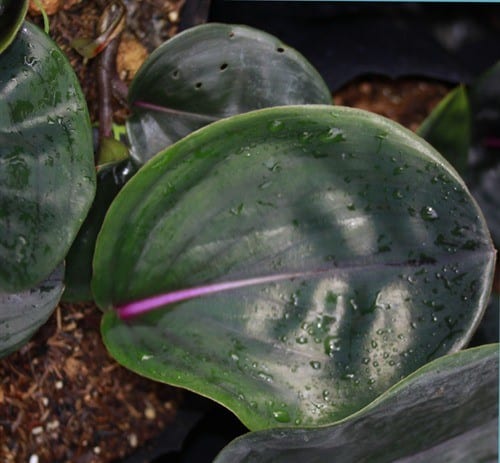
It is important to use room temperature or lukewarm water when watering Geogenanthus Ciliatus, as cold water can shock the plant and cause stress. And if possible use dechlorinated water.
During the winter, as the temperature goes down and the weather begins to cool off, Geo’s watering frequency may be reduced to avoid overwatering.
Curling leaves may indicate that your plant is too dry.
Geogenanthus Ciliatus Light Needs
When it comes to lighting, Geogenanthus Ciliatus prefers low to medium levels of indirect light. Direct sunlight can scorch the foliage, so it is best to place the plant in a location with dappled or partial sunlight, shade would be your best option.
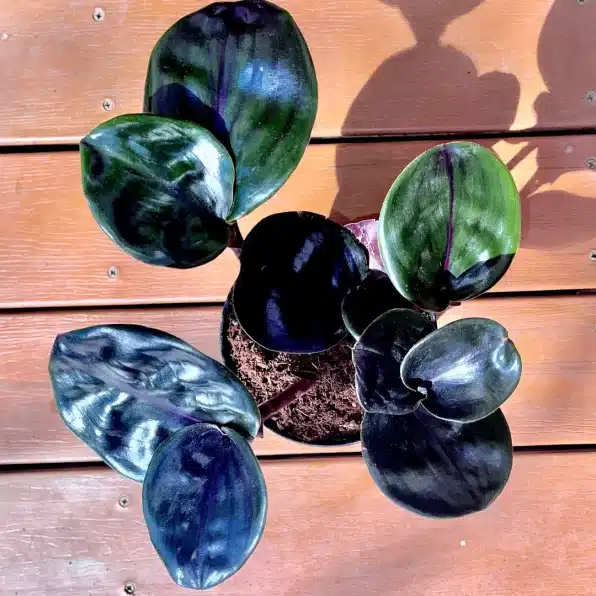
If growing indoors, fluorescent bulbs or other low-light artificial sources can be used to provide the necessary light for the plant's growth.
Humidity & Temperature
Geogenanthus Ciliatus thrives in high humidity and warm temperatures. The ideal humidity range for this plant is between 50-90%. It can benefit from frequent misting or placing the pot in a pebble tray or by having a humidifier nearby.
The plant can tolerate a range of temperatures, but it prefers warm temperatures between 65-80°F (18-27°C) and should be protected from temperatures below 50°F (10°C).
During the winter months, when indoor heating can cause the air to become drier, it's essential to maintain high humidity levels to prevent the plant from drying out. A dry environment can lead to browning or crisping of the leaf edges.
Fertilizing the Plant
Geogenanthus Ciliatus is not a particularly hungry plant and can be fertilized once a month during its growing season. Use a quality liquid fertilizer with a balanced NPK concentration to dilute the fertilizer by half before feeding your plant. Over Fertilizing can build up salts in the soil and this can burn the roots

During the winter months or when your Geo isn’t in a growing cycle, you can lay off the fertilizer completely. Adding fertilizer during the dormant stage doesn't do much and again can potentially damage your plant.
Pruning a Ciliatus
Geogenanthus Ciliatus doesn’t really require much pruning, but pruning in winter can help promote a fuller, bushier appearance when the next growing season rolls around. It’s important to remove any diseased, discolored, or damaged foliage and stems using sharp, clean pruning shears.
By pruning away the not so perfect foliage this helps to not only improve the plant's appearance but also help prevent the spread of any potential disease. Regular pruning also helps to increase the visual effect of this plant and also encourages healthy growth.
Geogenanthus Ciliatus Propagation
Geogenanthus Ciliatus can be propagated through two methods: rhizome division and stem cuttings. Rhizome division is done by separating the tuberous roots into sections using a clean, sharp blade. Each section should have at least one growing point. Plant the sections in their own container with fresh soil, tamp lightly, water thoroughly, and place in indirect light.
Propagation through stem cuttings is easier and faster, but you’ll want to do this in spring as the plant is ready for a growth spurt. Cut a stem from the parent plant, making sure it has at least one node. Remove the lower leaves from the stem, leaving only a few at the top. Dip the cut end in rooting hormone and plant it in a well-draining soil mix. Keep the soil moist and the cutting in a warm, humid environment until roots have formed.

Geogenanthus Ciliatus Varieties
Geogenanthus Ciliatus is a unique and distinctive plant, with no known varieties. However, there are other plants in the Commelinaceae family that share similar traits and care requirements, such as the Tradescantia zebrina (Wandering Jew) and Tradescantia pallida (Purple Heart). These plants have colorful foliage and trailing vines that make them popular choices for hanging baskets and as groundcovers.
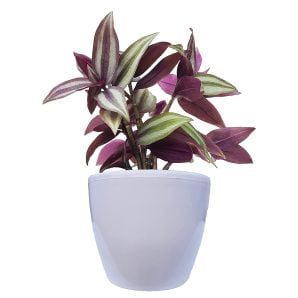
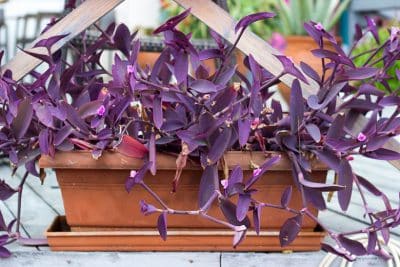
Another plant in the same family is the Commelina benghalensis (Tropical Spiderwort), which has similar flowering habits and a similar overall appearance to Geogenanthus Ciliatus. The Zebrina pendula (Pendulous Spiderwort) is also in the same family and has a similar trailing growth habit.
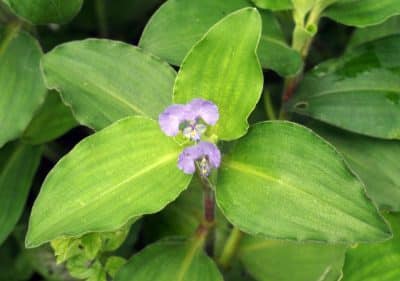
Common Geogenanthus Ciliatus Problems
Geogenanthus Ciliatus is a relatively easy-to-care-for plant, but like all plants, it can still face some common problems. In this section, we will discuss some of the most common issues that you may encounter when growing Geogenanthus Ciliatus.
Growing
Reasons for Geogenanthus Ciliatus may not be growing:
- Incorrect watering, either overwatering or underwatering
- Inadequate lighting, either too much or too little
- Poor soil quality, lack of nutrients or not well-draining soil
- Lack of humidity
- Pest infestation
- Disease or root rot
- Temperature fluctuations or extremes
- Lack of regular fertilization
- Lack of pruning or improper pruning
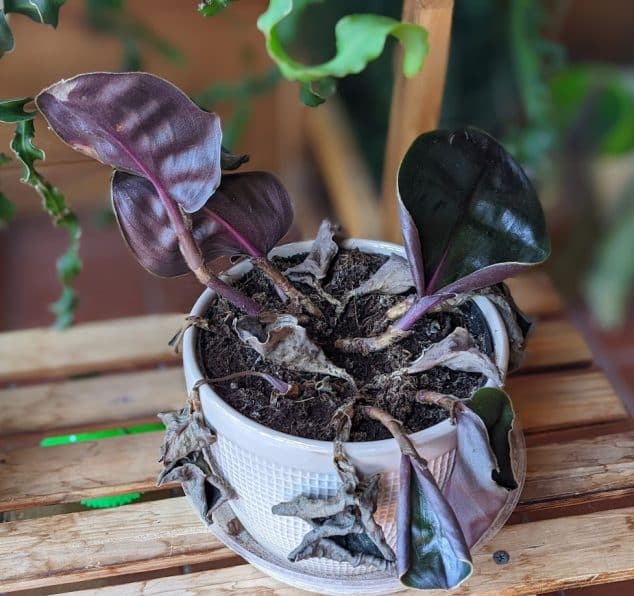
Diseases
Here are some common diseases that may affect Geogenanthus ciliatus:
- Root rot caused by overwatering or poorly-draining soil
- Leaf spot caused by fungi or bacteria, leading to discolored and spotted leaves
- Powdery mildew, a fungal disease that causes a white powdery coating on leaves and stems
Fungal disease may be the biggest threat for this plant because of the high humidity it loves.
It's important to keep an eye on your Geogenanthus ciliatus plant for any signs of disease and take action promptly to prevent further damage. Inspect your plant well before purchasing.
Pests
Common pests that can affect Geogenanthus Ciliatus:
- Spider mites
- Aphids
- Mealybugs
- Scale insects
- Thrips
- Whiteflies
- Fungus gnats
- Caterpillars
- Slugs and snails
If any of these pests are discovered it’s best to isolate the plant and treat with an insecticidal soap or neem oil.
Geogenanthus Ciliatus Fun Facts
- The plant is also known as the ‘purple geogenanthus' due to its striking purple-black leaves.
- Geogenanthus Ciliatus is native to the tropical regions of South America.
- The plant is a member of the Commelinaceae family, which also includes popular houseplants like Tradescantia and Spiderwort.
- The plant is sometimes called a ‘walking plant' because it can sprout roots from its stems, allowing it to move along the ground and find new places to grow.
- Geogenanthus Ciliatus is not commonly seen in cultivation and can be quite rare in some areas.
- Although it is a native to Ecuador and Peru, it was discovered in Southeast Asia
- Geogenanthus genus has only 3 plant species, which contributes to its rarity.
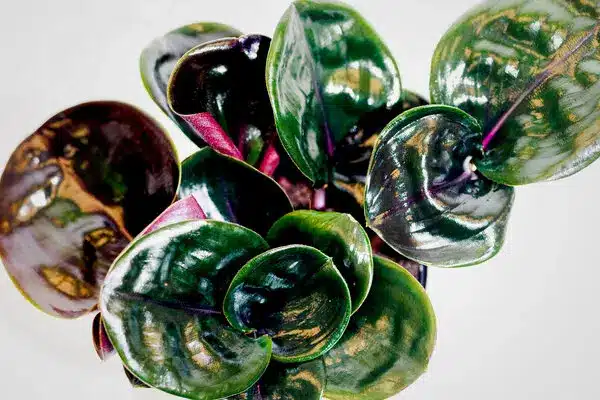
FAQ’s
Where to buy Geogenanthus Ciliatus for sale?
Being relatively new to the market it may be difficult to find, but you can find it online and occasionally in big box store garden centers if you’re super lucky.
Is the Geogenanthus Ciliatus plant rare?
Yes, the Gegenanthus Ciliatus is considered rare and difficult to find.
Where is Geogenanthus Ciliatus from?
The “Geo” originates from the upper Amazonia on the eastern border of Ecuador and western Peru.
Is Geogenanthus Diliatus toxic to pets?
No, the Geogenanthus diliatus is a non-toxic plant both to pets and humans.


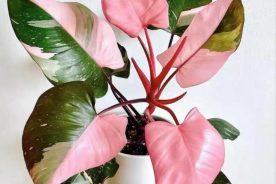
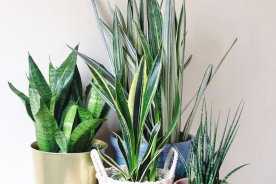

No Comments